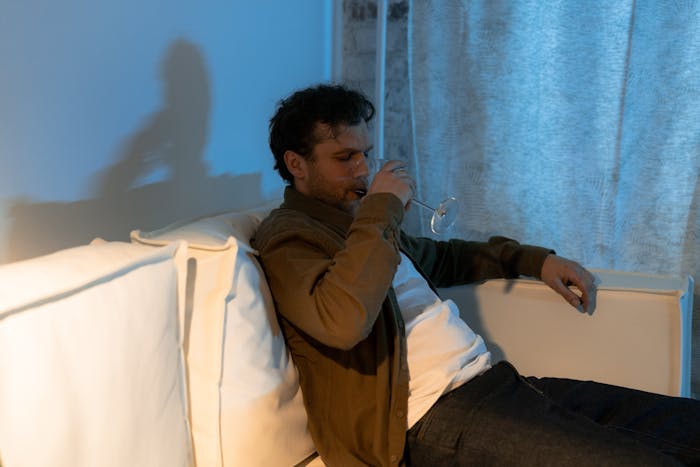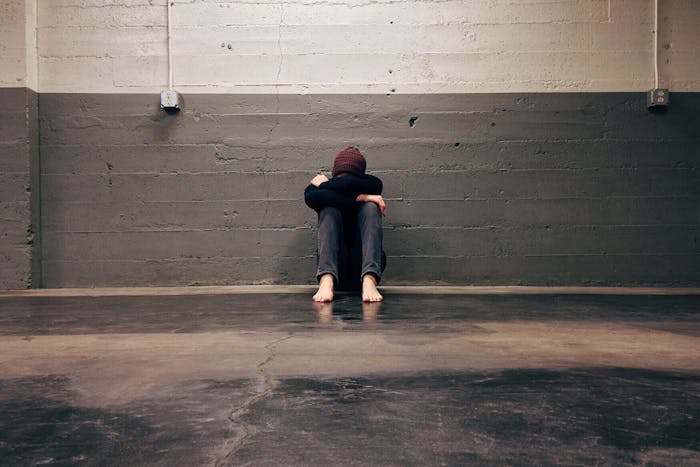In modern life, people have differing and complicated relationships with alcohol.
For some, they use it to relax, celebrate or socialise. However, for others, drinking becomes a way to cope with any stress, trauma, or emotional pain.
This habit is what psychologists call a maladaptive behaviour.
This blog will explain more about what exactly maladaptive behaviour is and how you can break the cycle of maladaptive drinking.

A maladaptive behaviour is any action or pattern that can develop as an attempt to cope with stress or difficult feelings. However, this pattern of habit can cause harm. [1]
An example of this could be when someone might turn to alcohol to manage anxiety or loneliness. It may initially seem to work through numbing discomfort and creating a brief sense of relief.
But, over time, this can damage health, relationships, work and your mental wellbeing, and creates a cycle that becomes harder to break. [2]
Examples of maladaptive behaviours include:
These behaviours develop as a response to discomfort, but ultimately keep the person trapped in the difficult situation.

Not everyone who drinks alcohol has a problem, and having a drink now and again doesn’t automatically make it a maladaptive behaviour.
The difference lies in why and how someone drinks.
Alcohol use becomes maladaptive when it’s used in the following ways:
Over a longer period of time, drinking to cope can blur into dependence. What started as “I need a drink to relax” may become “I can’t relax without a drink”.
This shift marks the point where alcohol is no longer just a drink, it’s something that is controlling them.
To understand why alcohol becomes a go-to coping mechanism, it can be helpful to look at what exactly happens in the brain.
When we drink alcohol, there is an increased release of dopamine, a neurotransmitter associated with pleasure and reward. It also suppresses activity in the parts of the brain linked to stress and inhibition, creating feelings of relaxation and temporary relief. [3]
However, this relief is short-lived and, over time, the brain adapts to these changes, producing less dopamine naturally and increasing stress hormones like cortisol. This means that when someone isn’t drinking, they may feel low or anxious, driving them back to alcohol for temporary comfort. [4]
The neurological angle is what makes alcohol such a dangerous maladaptive coping mechanism, as it provides short-term relief but reinforces negative long-term habits.

You may develop an issue with drinking alcohol to mask or avoid emotional pain. Some triggers for drinking include:
Alcohol is used to try to improve emotional pain or to “relax” your mind, yet this process ultimately causes harm in the long run.

A defining feature of maladaptive behaviour is avoidance. This is through the use of a behaviour to avoid uncomfortable thoughts, emotions, or situations.
A good example of this is when someone might drink after work in order to use alcohol to numb stressful thoughts or feelings of failure. However, avoidance tends to make these feelings only stronger over time.
When underlying problems are avoided, the need to escape them increases and often leads to heavier or more frequent drinking.
In addiction recovery, learning to address and process these thoughts and emotions, rather than use substances to numb them, becomes a key part of healing.
To better understand the difference between healthy and maladaptive coping, below is a comparison:
Healthy coping with stress and anxiety includes:
Maladaptive coping includes:
Healthy coping mechanisms allow you to process your feelings and build resilience. However, maladaptive coping strategies only mask the symptoms and how you’re feeling, usually generating new problems in the future.

Recognising alcohol use as maladaptive is an important first step to changing your habits. It can help you to shift from self-blame to self-understanding.
Instead of seeing your drinking as a weakness, see it as a sign of unaddressed trauma or pain.
To break the cycle of maladaptive drinking, recovery involves stopping the maladaptive behaviour and replacing it with healthier, sustainable coping strategies.
A few practical steps to help break the cycle include:
Try to get a track of when, why, and how much you drink.
Write down emotional or situational patterns that often lead to you drinking.
Learn the best alternative coping tools for you. This could be practising mindfulness, therapy, journalling, or joining support groups.
Therapies such as Cognitive Behavioural Therapy (CBT) can be especially effective in identifying thoughts behind your drinking and how to replace bad habits with healthier alternative coping mechanisms.
Find communities where you can share your feelings openly or speak freely to loved ones you trust.
If your drinking is particularly heavy or you think that rehab is the best option for your personal situation and recovery, attend professional rehab to help establish long-term recovery.
Seeing alcohol misuse as a maladaptive behaviour opens up the path for recovery without judgment and gives you a way to understand the “why” behind the behaviour.
If you recognise or someone you know falling into the habit of maladaptive drinking, you’re not alone. Many people misuse alcohol to cope without realising it’s doing you more harm than good.
The good news is that it’s possible to break the cycle and find new coping strategies.
At Rehab 4 Addiction, we offer compassionate and confidential advice for alcohol detox options and tailored alcohol rehab programmes.
Call 0800 140 4690 today for expert advice on starting your recovery journey.
[1] https://pmc.ncbi.nlm.nih.gov/articles/PMC6232846/
[2] https://pmc.ncbi.nlm.nih.gov/articles/PMC6134834/
[3] https://www.niaaa.nih.gov/publications/alcohol-and-brain-overview